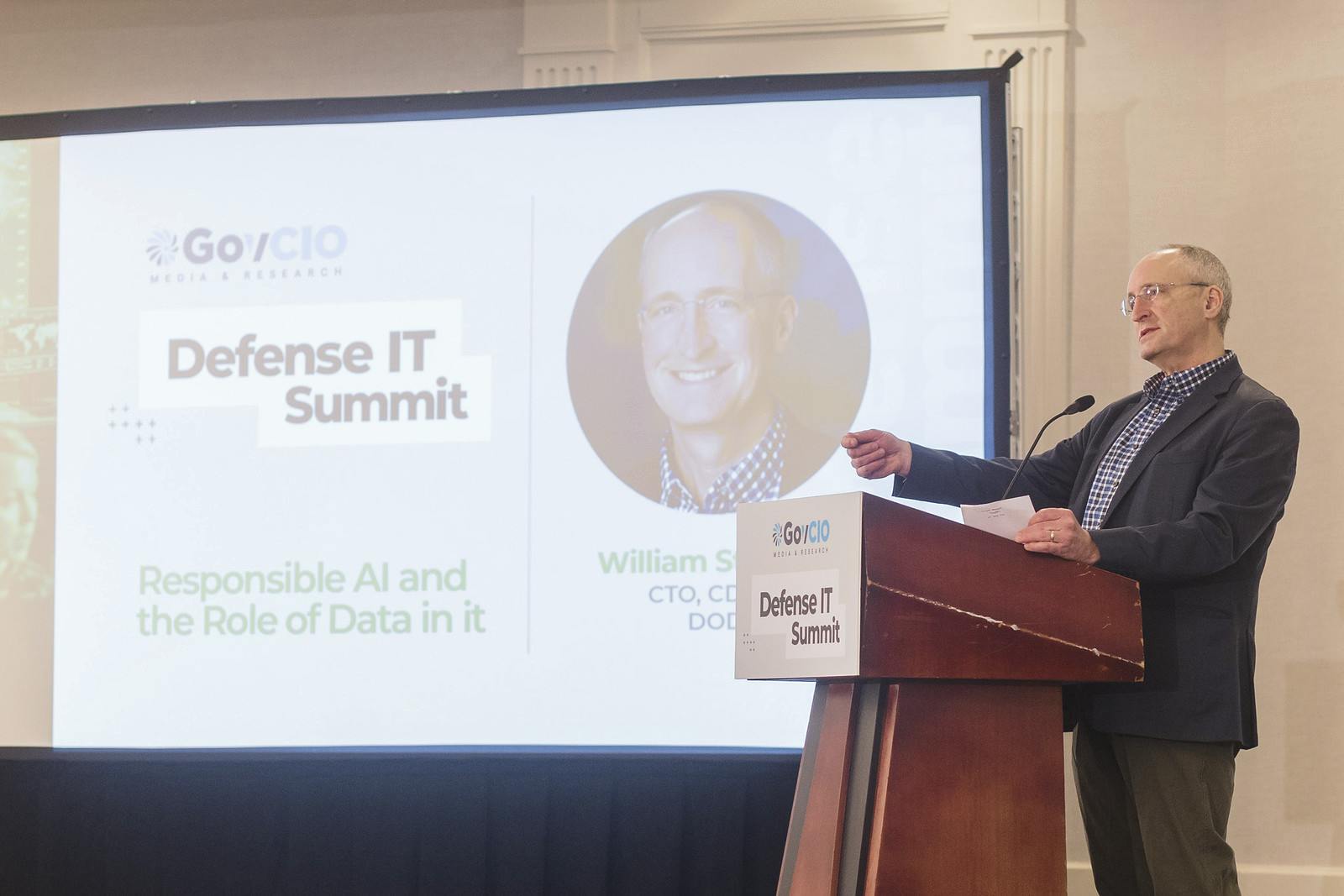DOD Software Factories Are Creating Innovation Culture
Defense leaders say the agility of software factories encourage innovation and reduce inefficiencies in critical defense programs.

The Defense Department’s prioritization on software factories for technology development is creating a culture of collaboration needed to innovate around critical defense programs and systems, software leaders at the GovCIO Media & Research Defense IT Summit Friday.
“Within the software factories, the programs that are successful, we see a hybrid approach where we’re bringing the government and our [Defense Industrial Base] partners together to work collaboratively on a sprint-by-sprint, day-by-day, hour-by-hour, minute-by-minute approach — and that seems to be fundamental to this,” said DOD Chief Software Officer Rob Vietmeyer at the event.
Vietmeyer said DOD had to shift its thinking from being solely focused on cloud to integrating a wider swath of cybersecurity controls and specialized personnel to achieve its mission.
“What we find is that the speed at which technology is changing, the speed at which you have to adapt your mission, and technology is critical to your ability to adapt, requires us to rethink these problems,” he added.
Lt. Col. Charlie Bahk, director of the Marine Corps Software Factory launched last year, said the service utilizes assets from the Army’s software factory to utilize the inherent tech talent within the Marines’ own workforce.
“We have this latent talent scattered throughout the service … it’s a new digital generation. These fine young men and women are digital natives now, so how foolish would we be to not capitalize on that,” Bahk said at the event. “This is what they consider to be passionate and meaningful work for them, and we want to provide them some upskilling and resources to be able to go out and actively contribute to the warfighting edge.”
Bahk said that while finding and training talent was a boon for the force, it was also important to provide a career path for tech-focused Marines without impeding them from advancing further in the service.
“If we don’t capitalize on that and recognize that and then incentivize them, providing them the career pathways in the ecosystem to retain their talent for as long as possible and continue to invest in them and grow, we’re fighting a losing battle,” Bahk said.
Dave Lago, product manager for Vulcan at DISA J-9 Hosting and Compute, told GovCIO Media & Research that making the federal government more of a “Silicon Valley” feel was key to encouraging disruption and innovation.
Lago emphasized that not just one solution can be applied to any program, but rather being flexible in approach and finding tools for small and large programs was important. Lago said that Vulcan provides those tools to programs looking to build their own software factories, regardless of size.
“In DOD there’s the haves and the have nots. There are the very well-funded programs and there are the not-so-well-funded programs. The very well-funded programs don’t have any problems getting access to tools. That’s not a problem; they’ve got the budget for that. The have nots — there’s still a need to get these tools out there and that’s part of the reason we stood up Vulcan, was to satisfy both of these,” Lago said at the event.
While software factories are lauded by the DOD as a way to quickly develop and scale new technologies, the officials emphasized that moving fast doesn’t mean DOD isn’t considering security and quality as well.
“It’s not a trade. It’s not speed at sacrificing quality or security. No — it’s all three, but the approach is fundamental change to how you get there. We have to build on some common platforms, solve at the infrastructure level what can be solved at the infrastructure level, allow the specialized teams that know how to secure and deliver infrastructure let them do that and then build the next layer on top of that,” Vietmeyer said.
This is a carousel with manually rotating slides. Use Next and Previous buttons to navigate or jump to a slide with the slide dots
-

Acquisition Innovation is Boosting Sea Service Capabilities
Leading officials from Coast Guard, Marines and Navy cited innovation in contracting as a major reason for better delivery of technology.
3m read -

Marine Corps Software Factory Says People Are its Strongest Asset
Lt. Col. Charlie Bahk, Software Factory Director, Marine Corps
15m listen -

DOD Tech Leaders Highlight What's Next in the AI Wave
Defense leaders share how they are strategizing artificial intelligence for national security applications.
4m read -

DISA HAC Director Shares Commercial Cloud Capability Progress for Indo-Pacific
Sharon Woods briefs updates on programs like Vulcan and OCONUS cloud.
8m read








